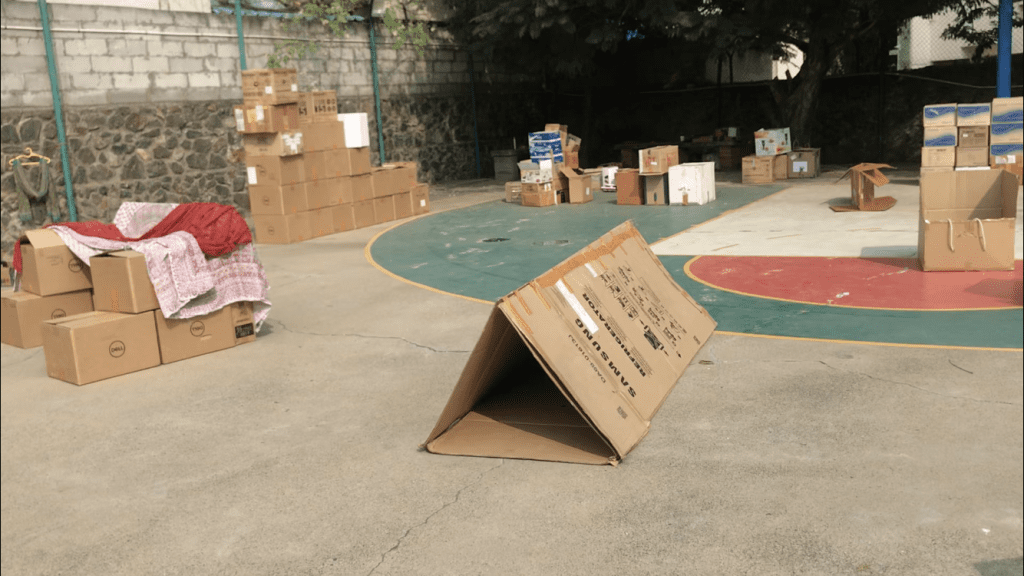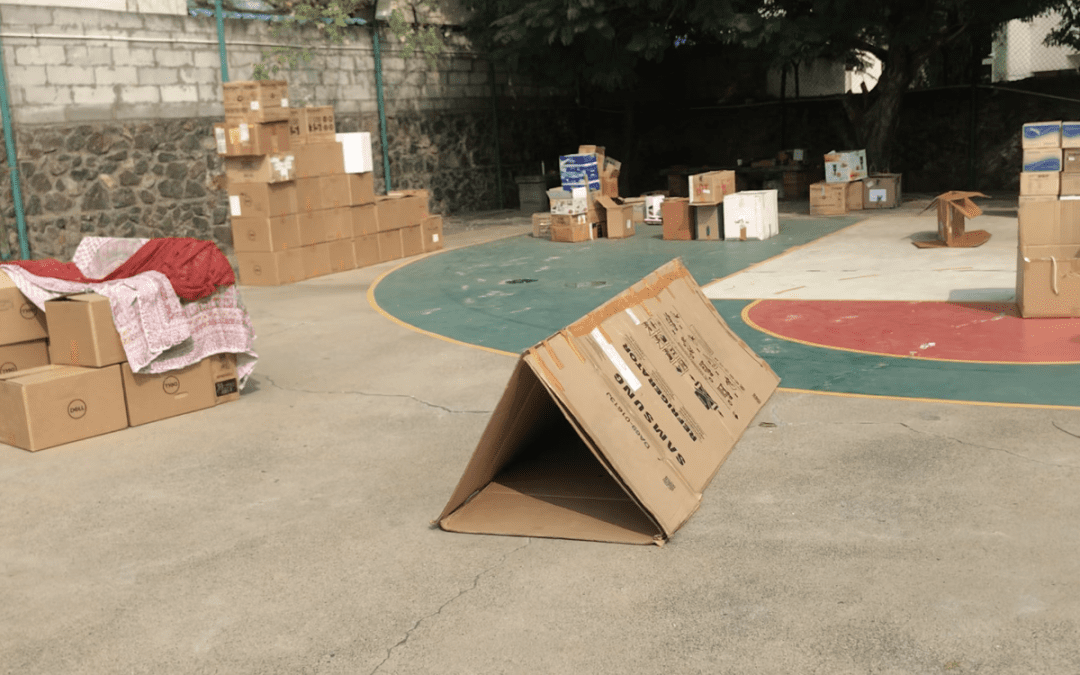Our Playworker Development Course brings people together from all over the world to talk about playwork. Divya is from India. She joined the course in March 2019, with the intention of channelling her passion for play. She successfully completed the course in March 2020! We’ve invited her to share her creative play experiences as a novice playworker.
Early this year, I had the opportunity to organise a Pop-Up Adventure Playground during the annual school carnival at Abacus Montessori School, Chennai, where my children study. I organised this pop-up to showcase play and the potential to use low cost, recyclable and recycled materials. The flexibility of the pop-up model lent itself to the environmentally-conscious ethos of the school and the event — a “Greenival”—perfectly.
Seeing play opportunities in everyday materials
The pop-up benefits from support from the school, material donations from parents, and teams of hands-on parent volunteers. Combinations of parent volunteers collected, stored and transported materials to the play site; and helped with set-up and clean up. A different set of parent volunteers were play facilitators on the day.
Before the pop-up had a chance to really pick up, one child walked onto the designated play area. He saw numerous cardboard boxes, an assortment of tyres, cloth and curtain material, rope, wooden pegs, and duct tape. A few boxes became sleds, tunnels, houses and other random structures. On the far side, there was a small art wall with additional paper, markers and crayons. Taking in the incredulous sight of his basketball court thus transformed, he asked, “Is this Cardboardland?” Although yet to physically explore the playground and play in it, in that one word he opened up a world full of possibility, setting the tone for the evening.

Many children approached the Pop-up knowing exactly what to do. Others looked to the adults for instructions on “how to play”, which, needless to say, they never received. Children who approached with hesitation soon took the cue from other children. Parent volunteers held onto scissors and bread knives. As the joy, and exhilaration, increased, permission seeking behaviour dwindled.
Valuing play
The play that unfolded stood testament to the idea that children respect and value each other’s play as much as their own. Moreover, there is full engagement: kids can lay claim to their space and freedom to play. Kids can completely immerse themselves in what they were doing.
Here are some of the scenes:
- A boy inspired by the pre-prepared sled and tunnel recreated his own sled and gave it a roof to keep out the sun.
- Another much older boy draped himself in curtain material, the king of all he surveyed.
- A cardboard box with scenic mountains for a well-known television brand became a popular ‘photobooth.’ This after a girl stuck her head out of pre-cut windows to be photographed ‘on the mountain’.
- Some cardboard boxes got rearranged into steps, which a younger boy began to climb as if it were a mountain to be conquered (he needed to be told to think through what he was about to do).
Creating a car
One child valiantly tried to recreate a working model of a car with tyres, rope and boxes. He eventually gave up. Another child chose to swirl, a tyre in each hand, feeling their weight affecting the movement of his body. An older boy enjoyed twirling the sleds above his head like a lasso. A girl used the tyres to create an obstacle course, before proceeding to ‘wear’ them by standing almost neck-deep inside a tower of tyres. Another girl was sitting amidst a half-accessed wall of cardboard boxes, just resting and watching the others.
Some children chose to play in groups of twos and threes. They gave one another sled rides, rolled tyres toward each other waiting for them to bump and fall, and bounced small tyres around like a ball. Many created dens with cardboard and cloth, watching the light taking on the hues of the cloth from inside. Finally there were three large groups of slightly older children taking turns to create castles. The same boxes and cloth were used by all groups, and each castle had its own quirks and additions.
Getting the most out of play opportunities
I will always remember the last scene of the pop-up. During clean up, the cardboard boxes had been rounded up and concentrated in one area. The space looked much like a ball-pit made of cardboard. A few remaining children were walking, jumping, pouncing and hiding under the spread. As I watched them squeeze out the last drops of play from Cardboardland, I was left with a sense of gratification. As a playworker with little experience, it had been exhausting, but well worth the effort.
The pop-up was held in mid-January, and some time has elapsed since the event. As I write, we are living in a whole new world, filled with extreme uncertainty. Many of the adults I interacted with were struck by the simplicity of the materials and the play value it had for children. It is my hope that, as we wait for the tide to turn in our physically distant spheres, play continues wholeheartedly among the families that were present that evening. The Playworker Development Course has been instrumental in teaching me that children play no matter what, and I hope that the school pop-up taught all families present a little something about supporting play, even in a moment of crisis.
By Divya Badami Rao
